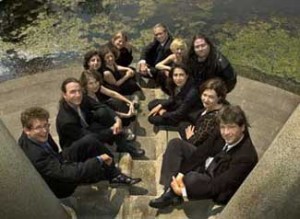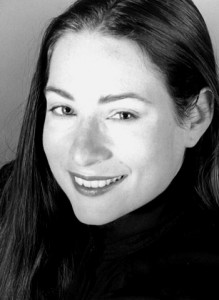Concert Review: Chameleon Arts Ensemble Delves into the Romantic Spirit
Chameleon Arts Ensemble’s program, “into unison with romantic spirit,” contained more rarities than many chamber music groups perform in a season.
Concert 4: into unison with romantic spirit by Chameleon Arts Ensemble. March 24 and 25.
By Susan Miron
Chameleon Arts Ensemble put on a fascinating program this past weekend, Saturday at First Church Boston, where I heard them, and Sunday at Goethe-Institut, Boston, where I usually hear them. I far prefer the First Church, a roomier venue with good acoustics.
This program, “into unison with romantic spirit,” contained more rarities than many chamber music groups perform in a season. It opened with a rarely-heard work by the 16-year-old Gustav Mahler (1860–1911), best known during his life as a famous conductor, who in his later years was music director of the New York Philharmonic and the Metropolitan Opera. His brilliance as a composer came late in his life, and as the program notes point out correctly, the Nazi ban on music by Jews “inevitably slowed the growth of his international reputation.” A fascinating piece of student-day composition, the piano quartet received a lovely reading by Katherine Winterstein, violin, Scott Woolweaver, viola, Rafael Popper-Keizer, cello, and Vivian Chang-Freiheit, piano, who split the evening’s strenuous piano duties with Gloria Chen. Both pianists did a great job.
The Alban Berg (1885–1935) piece that followed, Adagio, II. Satz aus dem Kammerkonzert, was another piece that doesn’t get performed often, either in its original orchestration for 15 instruments or in its setting for clarinet. A mixture of atonal and romantic traditions, the Kammerkonzert (Chamber Concerto) was dedicated to Berg’s teacher Arnold Schoenberg. Writing about the composition, Berg admitted that the Chamber Concerto contained more cross-reference, riddles, puzzles, inside joke, and hidden pattern than anyone could fathom, while writing music to challenge its soloists. Pierre Boulez called it Berg’s strongest work. The performance (Kelli O’Connor, clarinet, Sean Lee, violin, and Gloria Chien, piano) was a bracing one, partly because I was awed by the violin playing of the gifted, young violinist Lee, who played magnificently. I predict a huge career for this young violinist.
The first half ended with Boston’s own popular John Harbison’s (b. 1938) five “Book of Hours and Seasons” (1973). The performers included soprano Elizabeth Keusch, flutist (and Chameleon’s Music Director) Deborah Boldin, the terrific cellist you see everywhere, Rafael Popper-Keizer, and pianist Vivian Chang-Freiheit. Oddly, this song cycle, sung and played with great beauty, sounded just right, musically and mood-wise, after the Berg. Its songs are built on poems of Goethe, and it had that same Mitteleuropa feel as the first two pieces. I don’t remember the last time these three pieces were programmed, so that alone made the first half quite impressive. And the level of musicianship high, as usual with this group.
The one familiar, much-played piece was Robert Schumann’s (1810–1856) Drei Romanzen, Op. 94 (1849) originally written for oboe and given a lovely performance here by oboist Nancy Dimock and pianist Vivian Chang-Freiheit. Violinists, violists, and clarinetists, and who knows who else, have adopted it as theirs.Its three movements are salon pieces, instrumental miniatures at their best, full of charming lyricism and the absolutely beautiful melodies. Schumann wrote it when he was in one of his productive, sunny moods during 1849, just five years before he would confined to an asylum. He died tragically in 1856. The performance was a little faster than I am used to, but the performers made it work quite elegantly.
Finally, the surprise of the evening was Erich Wolfgang Korngold’s (1897–1957) extraordinary (thank you Chameleons!) Suite for two violins, cello & piano left-hand, Op. 23 (1930). Many musicians know that Korngold wrote a violin concerto and had great success writing scores for Hollywood, but few know of this piece, which is lush and luscious, with a madcap middle movement (“Groteske”) that involves some delightful feats of cello virtuosity.
Korngold’s story is an interesting one. The son of the music critic Julius Korngold, he was pronounced a genius by Gustav Mahler. Korngold’s early opera, Die tote Stadt, written when he was 23, was a hit; music critic and composer Nicolas Slonimsky called him “the very last breath of the romantic spirit of Vienna.” Several prominent composers, including Strauss and Schoenberg, were not amused by this young composer getting such flattering attention from his father. To get some space between his father and himself, Korngold began to conduct and arrange music for the Vienna State Theater, where he met Max Reinhard who invited him to Hollywood, where he worked on film scores for several years. A trip home to Vienna in 1937 didn’t last, given that the annexation of Austria happened shortly afterwards. He returned to Hollywood, writing scores for many films including The Adventures of Robin Hood, for which he received his second Oscar.
Korngold met the soon-to-be injured pianist Paul Wittgenstein early in his career. He was the first composer to be commissioned to write a concerto for Wittgenstein when he lost his right arm during the war in 1914. (Others who wrote left-hand concertos for Wittgenstein include Britten, Prokofiev, and Strauss). Wittgenstein liked Korngold’s single-movement concerto so much he commissioned him again, in this case to write a piece of chamber music.
Like most left-handed piano writing, the Korngold Suite’s requirements for the performer are so dense that one cannot imagine it’s being played only by one hand. Sean Lee, Katherine Winterstein, and Rafael Popper-Keizer gave superb performances. Glora Chen was just fabulous.
Susan Miron, a harpist, has been a book reviewer for over 30 years for a large variety of literary publications and newspapers. Her fields of expertise were East and Central European, Irish, and Israeli literature. Susan covers classical music for The Arts Fuse and The Boston Musical Intelligencer.


